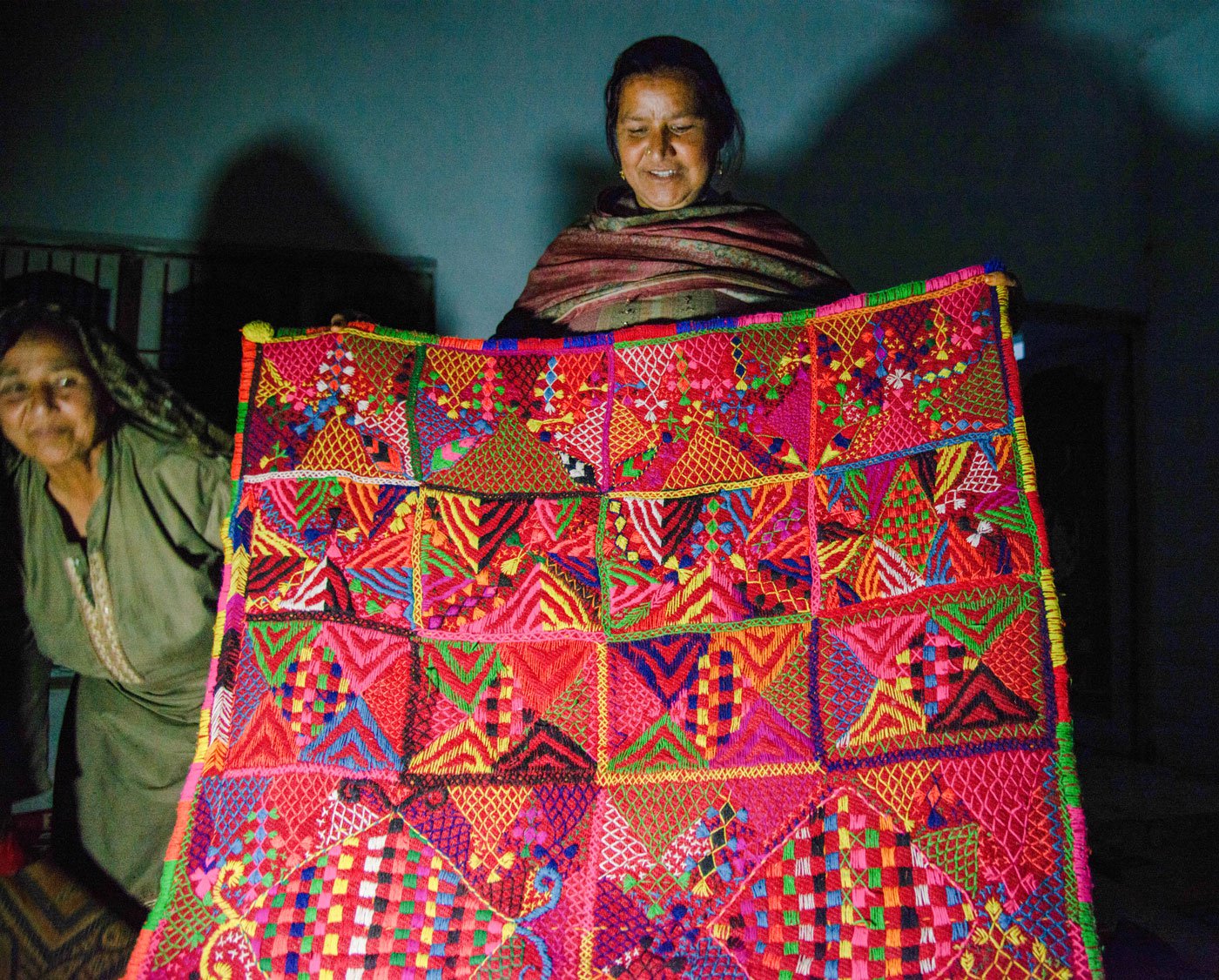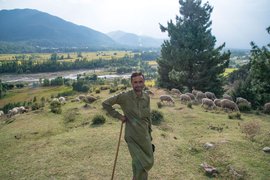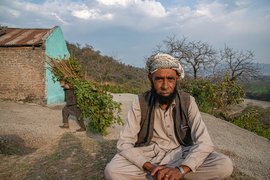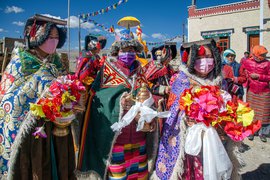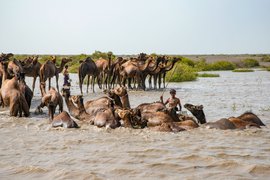Young Talab Hussain is stomping rhythmically on a blanket drenched in hot soapy water. It looks like he is dancing; he has a big smile on his face. “You have to stand on the soaked blanket, keeping balance,” he says, holding a tree in front of him for support as another man pours more hot and soapy water on the huge ghamela (vessel) in which the blanket is soaked.
It's a dark winter night in a small Bakarwal settlement in Samba district of Jammu. The only light comes from a nearby makeshift firewood stove holding a pot of boiling water that will be used to wash away dirt, leaking colours and lose threads from the freshly made woollen blankets.
The woollen blankets are made by members of Scheduled Tribe communities – Megh and Mihngh, known for their wool craftsmanship. Once the blankets are made, they are washed and dried by the Bakarwal men. The thread and yarn for the blankets are usually made by Bakarwal women, and the yarn is dyed at home by Bakarwal families.
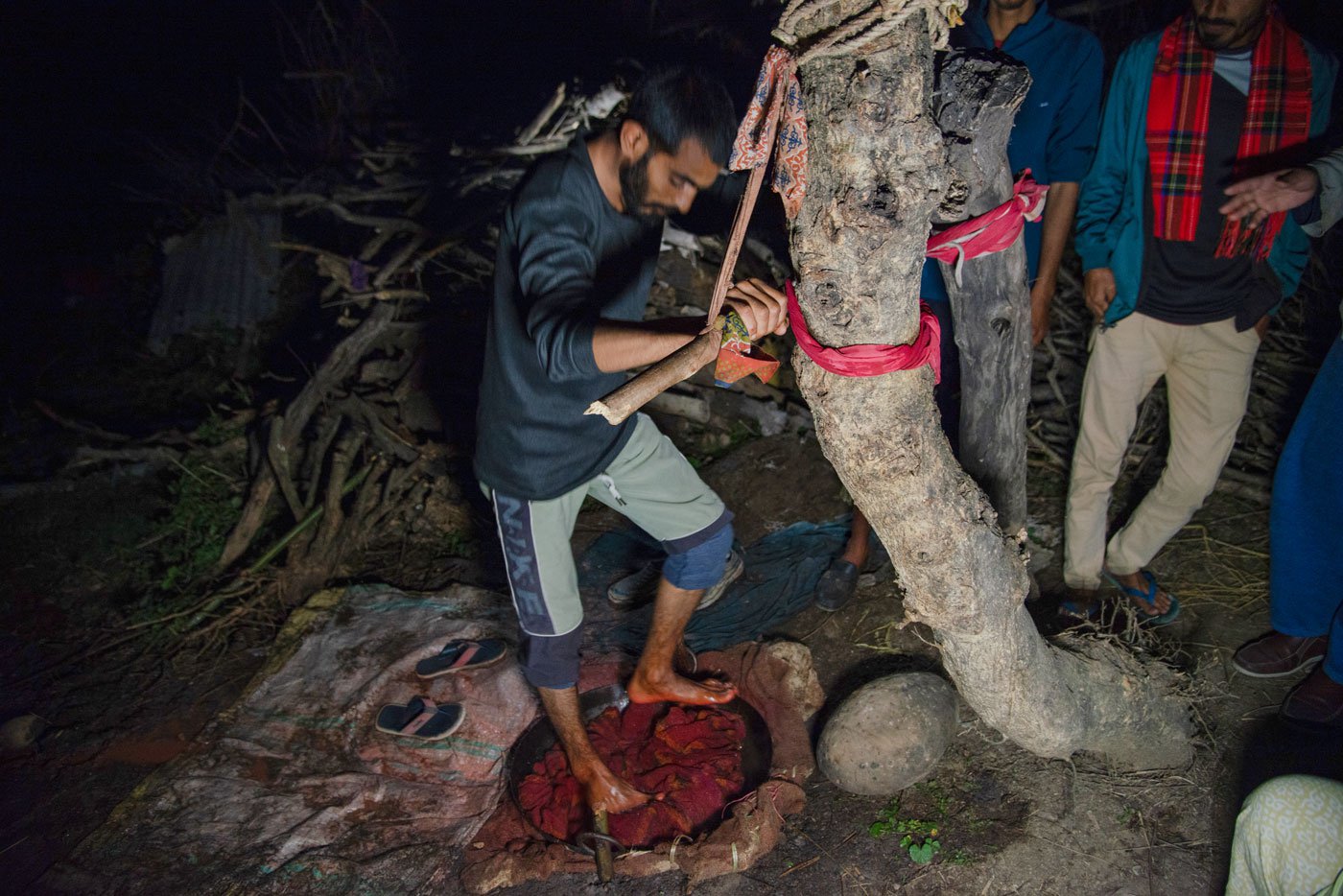
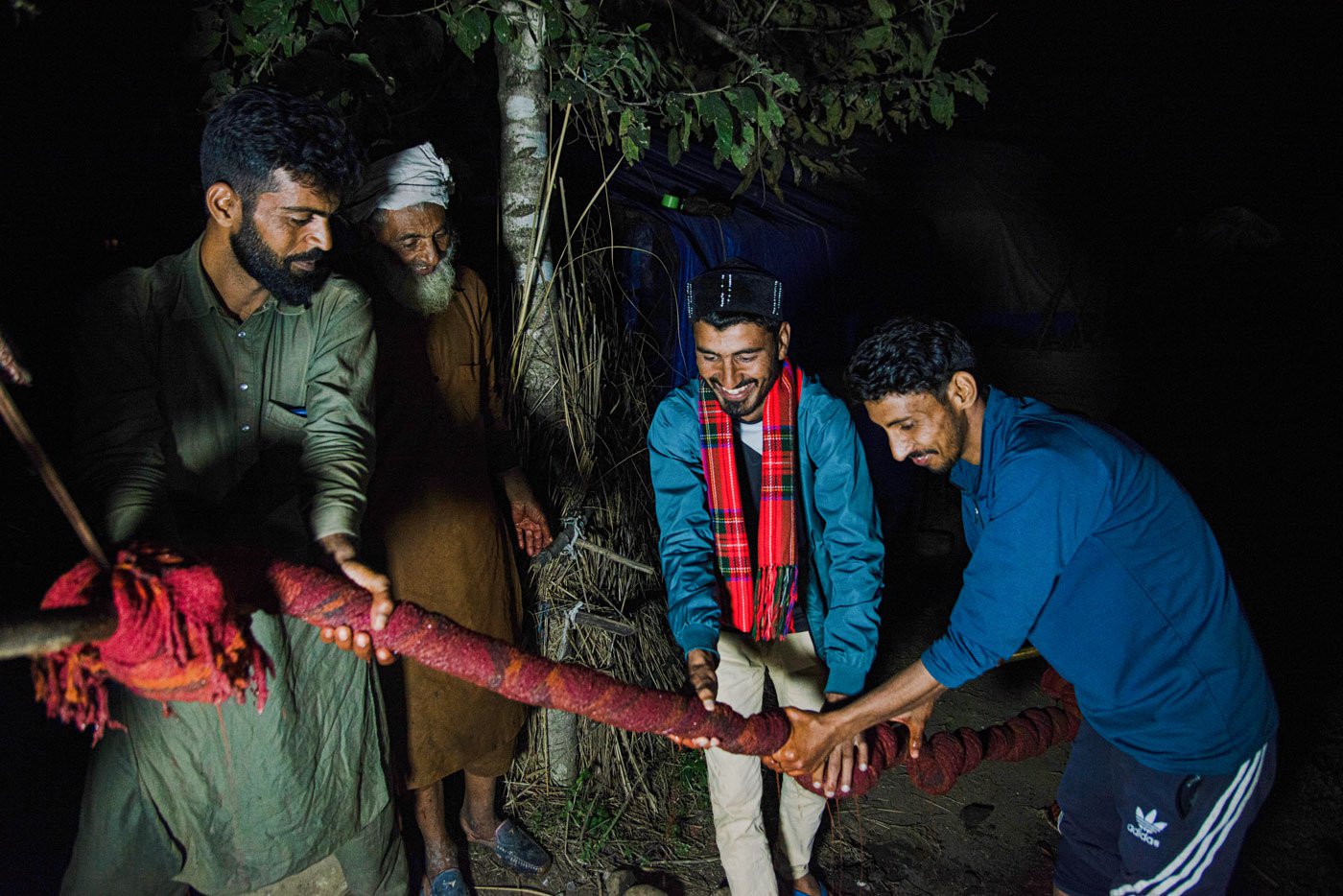
Bakarwal men (right) washing and drying the blankets. Talab Hussain (left) stomping on a traditional woollen blanket in Samba district of Jammu
Khalil Khan is from a settlement near village Pargalta in Jammu district. A young Bakarwal, he says that making a kambal (blanket) this way takes longer and is hard work, but it is much cheaper in the long run as it last longer. Mohammed Kalu has come from Khanna Chargal, a small settlement in a riverbed upstream from Pargalta. Pointing towards an old woollen blanket on which his little son is asleep he says, “You see that? [The blanket] lives as long as a human being or longer. But the market-bought acrylic wool blankets hardly last a few years.” He adds that blankets made of pachim (the local word for acrylic wool) take days to dry if they get wet, unlike pure woollen blankets. “Our feet burn and body aches after using the acrylic blankets in winter,” the shepherds Khalil and Kalu say.
*****
Not just blankets, but wool from their animals is also made into namdas – coarse wool rugs made using the felting technique with colourful floral embroidery. They also make smaller blankets, taru , that are used as quilts and can be gifted. These too are embroidered by women and each family and clan has its own unique designs.
“I can look at a quilt and tell you which family it comes from,” says Zareena Begum who lives in the same settlement as Talab Hussain. According to her, it takes around 15 days to make a blanket.
“Look at those blankets in the corner, they are for a family wedding. They are special. Depending on their means, the groom’s family gives 12-30 or even 50 blankets,” says Zareena who is a favourite grandmotherly figure in the community. She adds that today people don't give many but even so it is a must in every ceremony as a traditional wedding gift.
Although blankets are highly valued as wedding gifts, their place is slowly being taken by electric appliances and furniture.
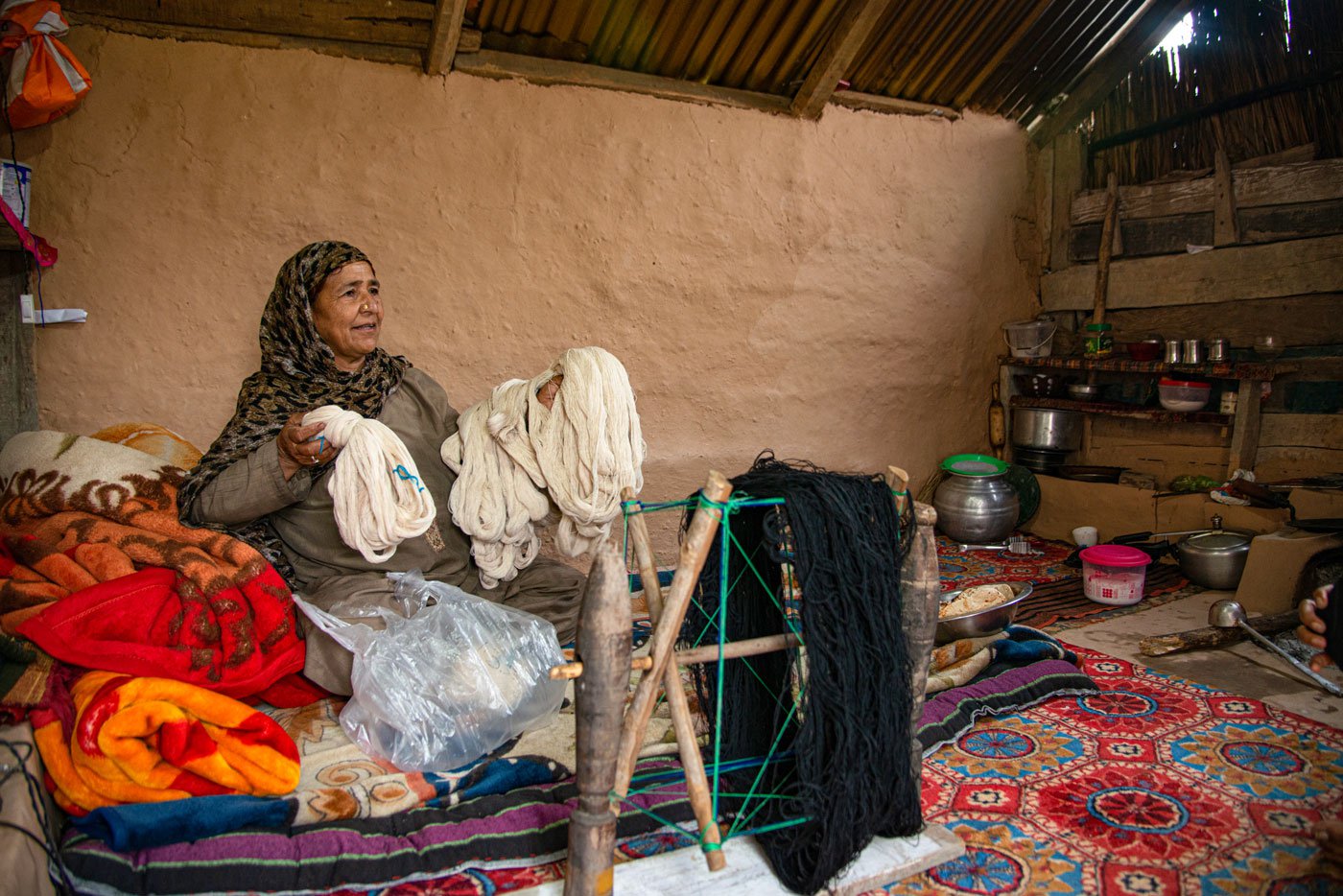
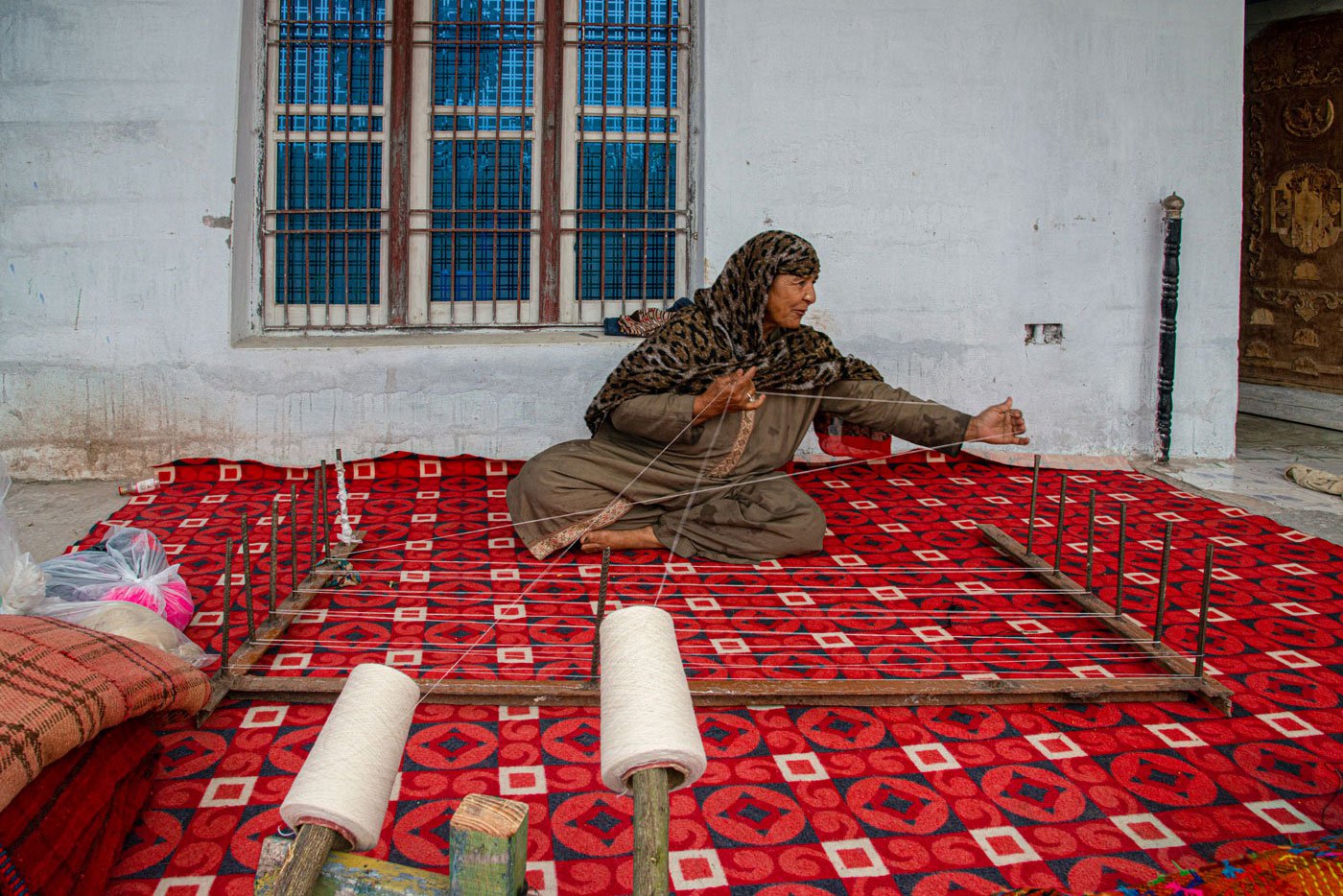
Zareena Begum is a veteran weaver and lives in Bakarwal settlement Samba district
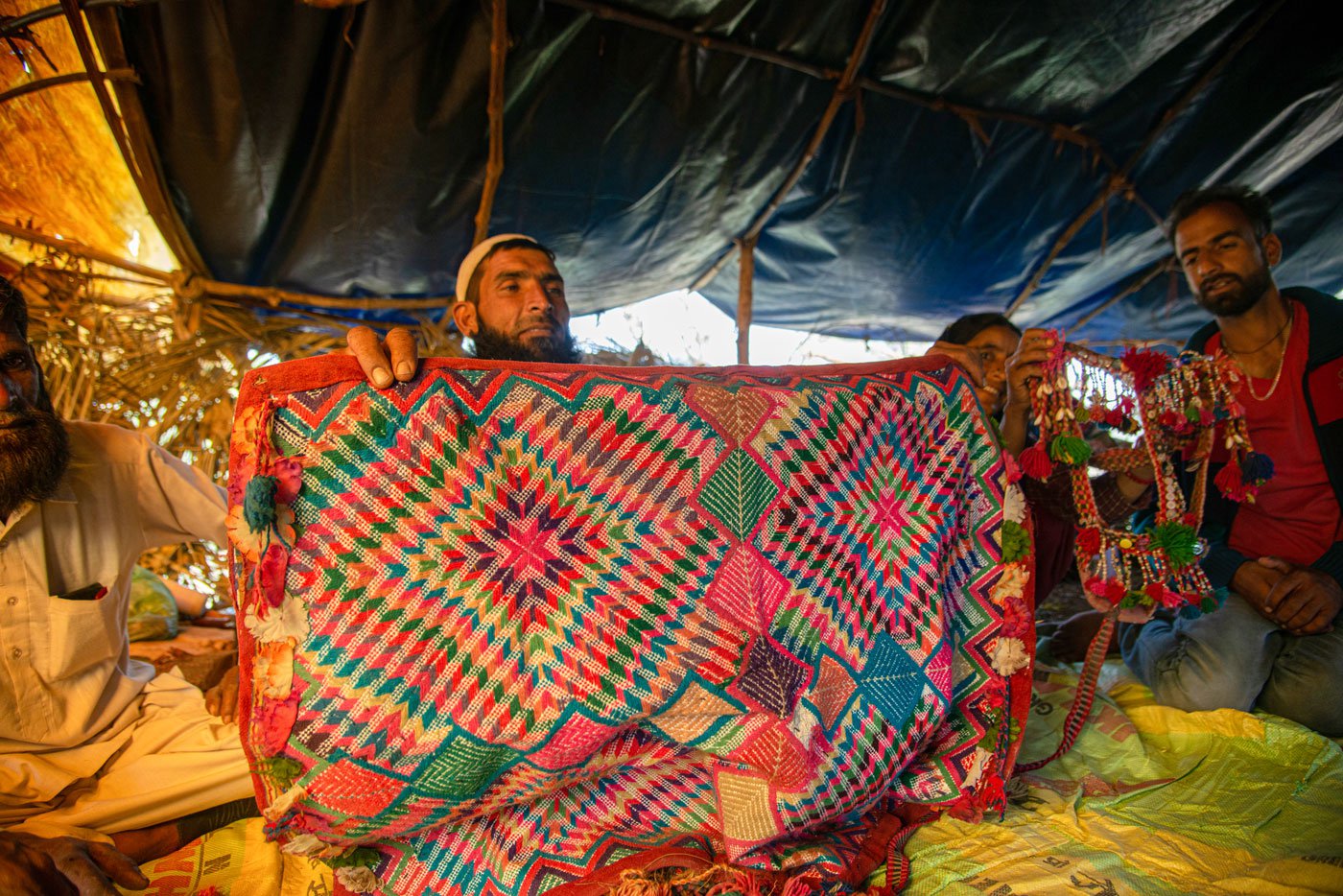
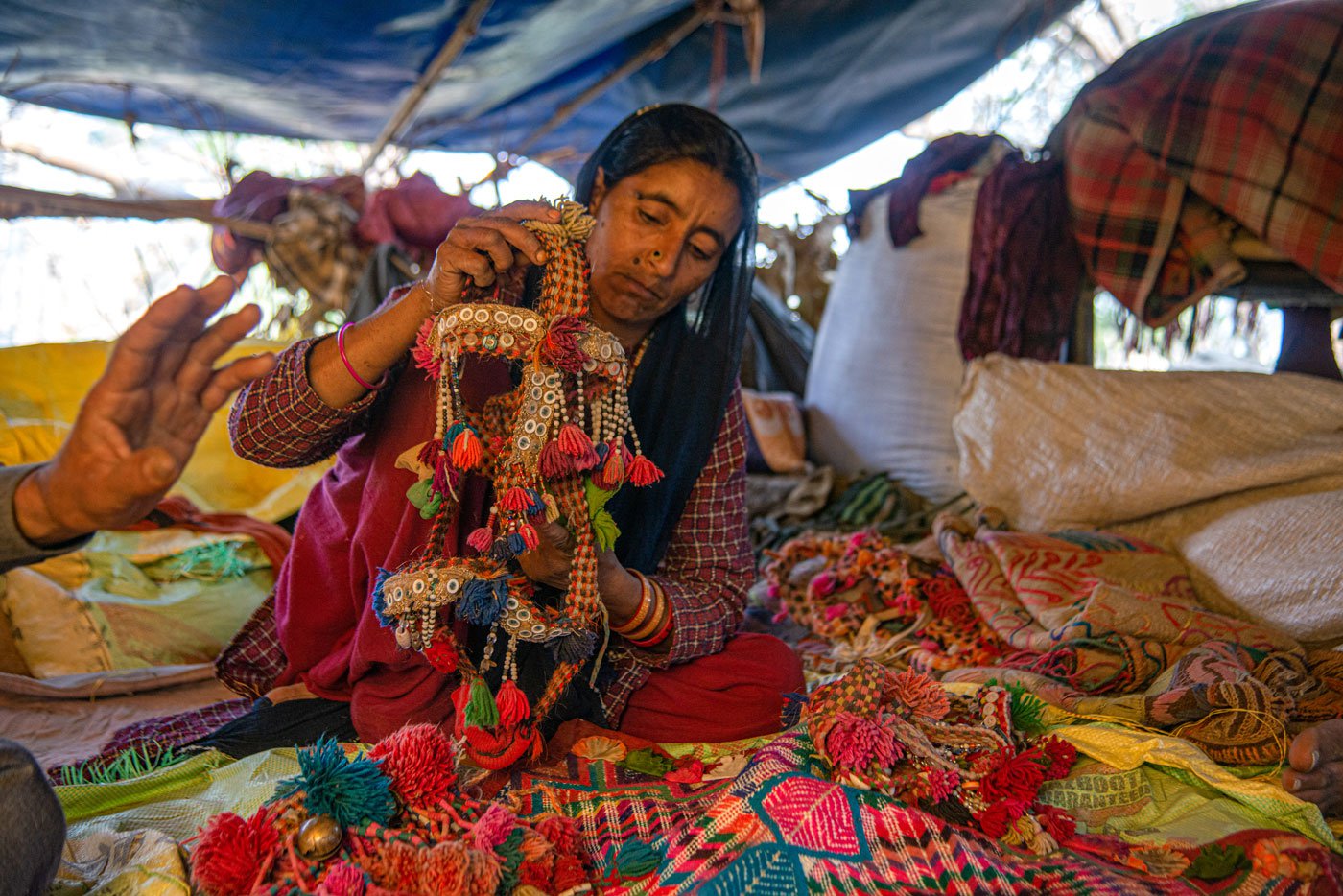
Munabbar Ali (left) and Maruf Ali (right) showing the handicrafts items they have made with Bakarwal wool
Munabbar and his wife Maruf live right at the edge of a settlement in Basohli tehsil , on the lower slope. Displaying their work under a worn-out tent Munabbar says, “Look at this beautiful embroidery; now there is no income for us.”
In their tent, lying around us are the handcrafted items they will take with them when they migrate to Kashmir with their 40 to 50 sheep and goats. There is a
taru
(quilt), horse tacks such as
taliyaro
,
galtani
that goes around a horse’s neck and has many bells, and
cheke
or bridles. “All this is hard work, this embroidery, the livestock. [But] we don’t have an identity. Nobody knows [our work],” Munnabbar adds.
*****
“It is difficult to get people who still have mills,” says Maaz Khan. In his sixties, Khan is from a family that still processes wool. Many in the community say that the charkha (spinning wheel) is dead and have given up spinning.
As a result, pastoralists are also finding it difficult to sell wool. “We used to get at least 120-220 [rupees] for a kilogram but now we get nothing. A decade or so ago even the goat hair had a price in the market; now even sheep wool has no buyers,” says Mohammad Talib, a Bakarwal from
tehsil
Basohli, in Kathua district. The unused wool lies in their storerooms or is discarded at the shearing spot. The number of artisans working with wool has also reduced.
“The Bakarwals don’t make any products nowadays. It has become
chota kaam
[small, menial work]. The alternative of synthetic wool is much cheaper,” says Dr. Javaid Rahi, an activist and researcher who has worked with the Gujjar-Bakarwal community for many years.
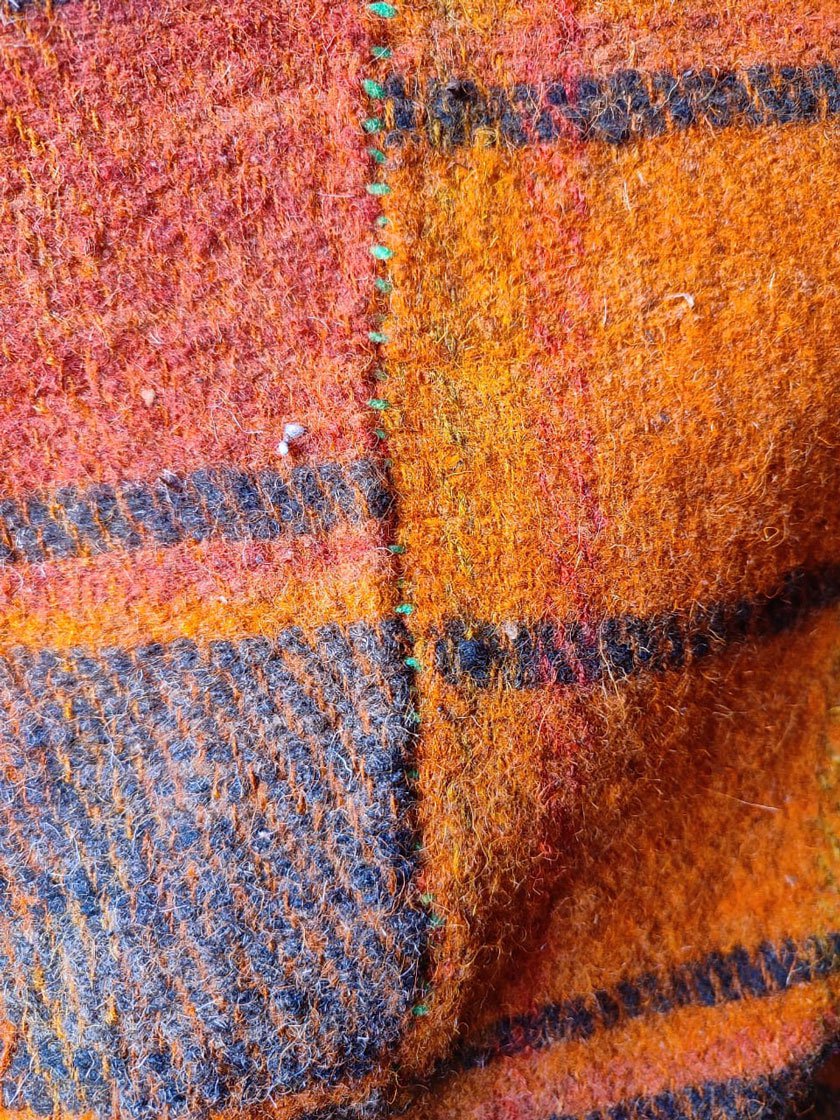
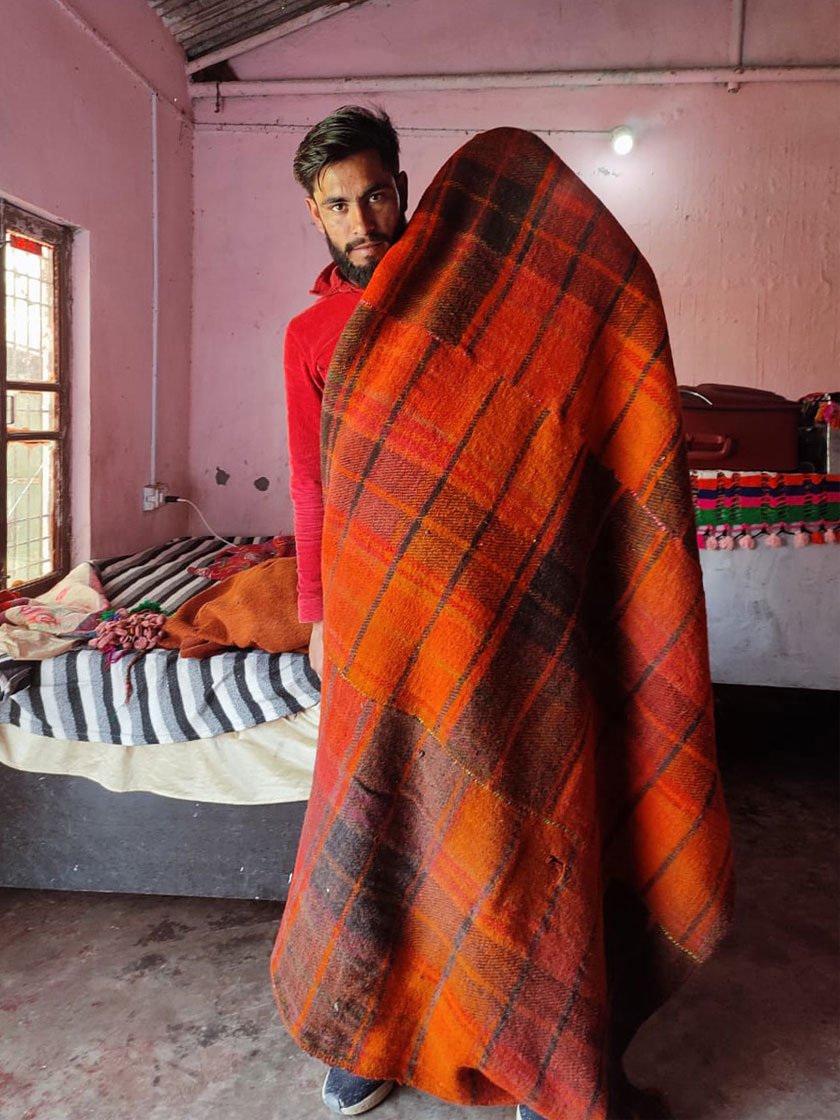
Left: Colours for the bankets are chosen by the Bakarwals but the weaving and stitching are done by a blanket maker. Right: Maaz Khan’s grandson Khalil shows the blanket that the family has made
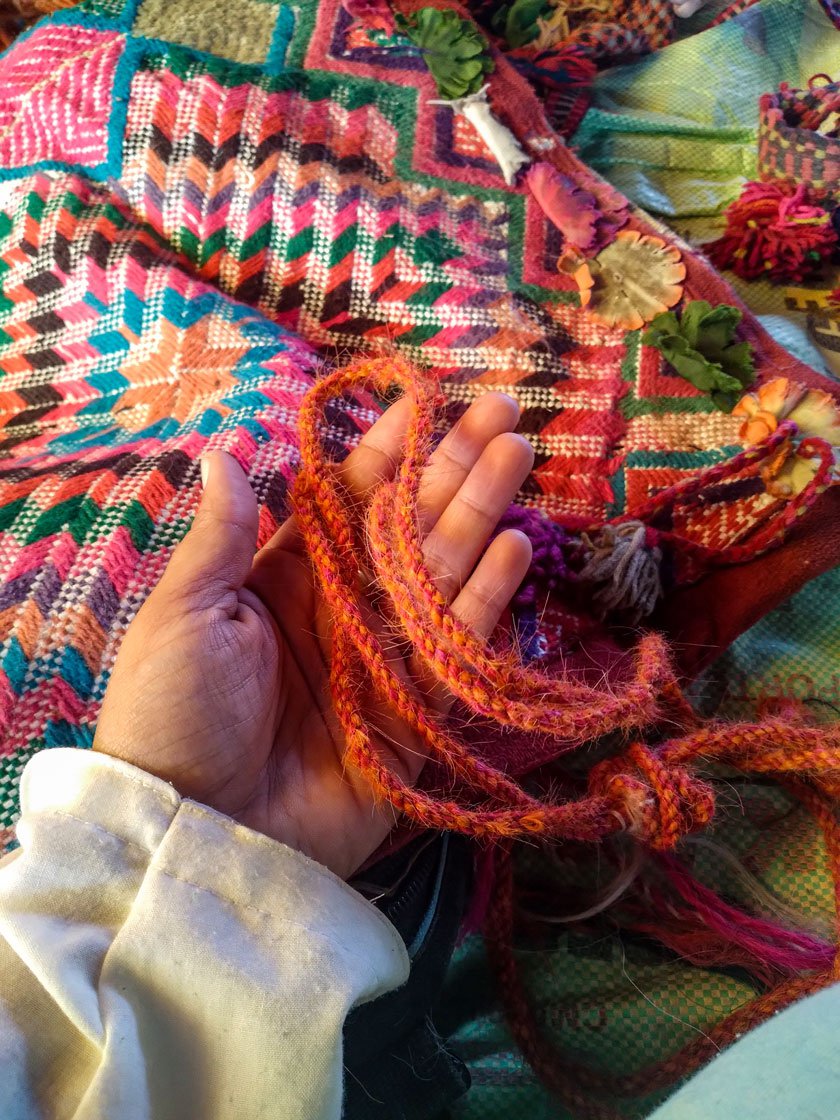
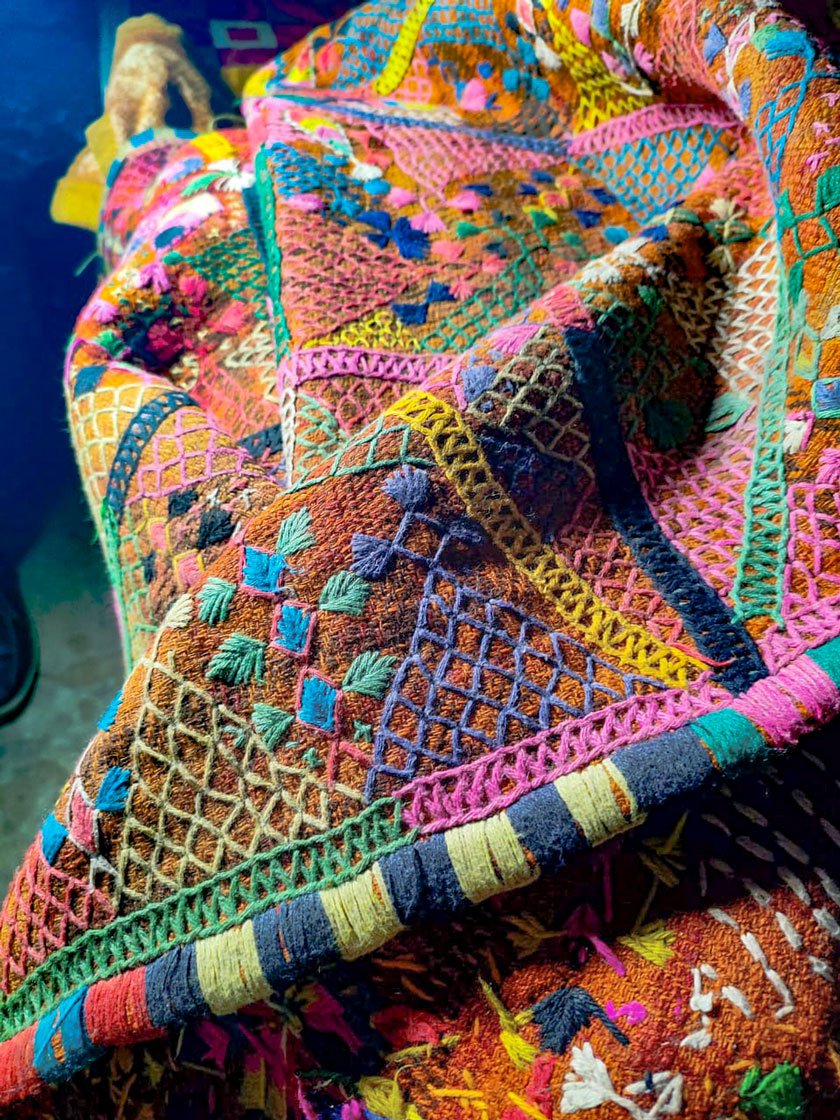
Left: Goat hair rope is also made along with the woollen articles. It is useful for supporting tents and for tying horses and other livestock. Right: A taru that was made as a wedding gift some time ago
Maintaining a herd of animals for their wool is no longer easy as grazing grounds are scarce in and around Jammu. They also have to pay people whose land their animals graze on.
Recently a lot of areas around the villages in Samba district were taken over by invasive species,
Lantana camara.
“We can’t graze here. There are weeds everywhere,” says Munabbar Ali, resident of a small village in Basohli
tehsil
.
Many of the old breeds of animals have been replaced by the state and Bakarwal’s say that the current cross-bred sheep cannot stand the heat of the plains for too long, and neither can they navigate mountain paths, “When we migrate to Kashmir, they stop in their tracks if there is a small ledge as it is difficult for them to jump. The old breed would walk well,” Tahir Raza a shepherd told us.
State-sanctioned fencing for the armed forces or the forest department for compensatory afforestation projects or conservation activities is restricting access to grazing lands. Read:
Fenced out: pastoral lives of Bakarwals
Summing it up using government lingo for the fencing, the pastoralists say, “There is closure [for us and our animals] everywhere.”
Ritayan Mukherjee reports on pastoral and nomadic communities through an independent travel grant from the Centre for Pastoralism. The Centre has not exercised any editorial control over the contents of this reportage.
